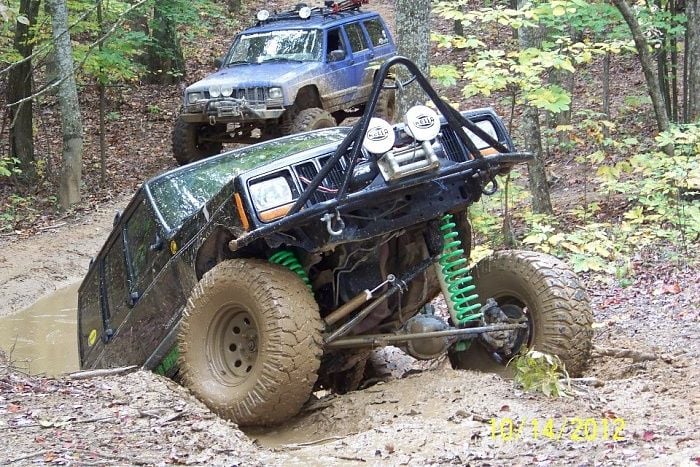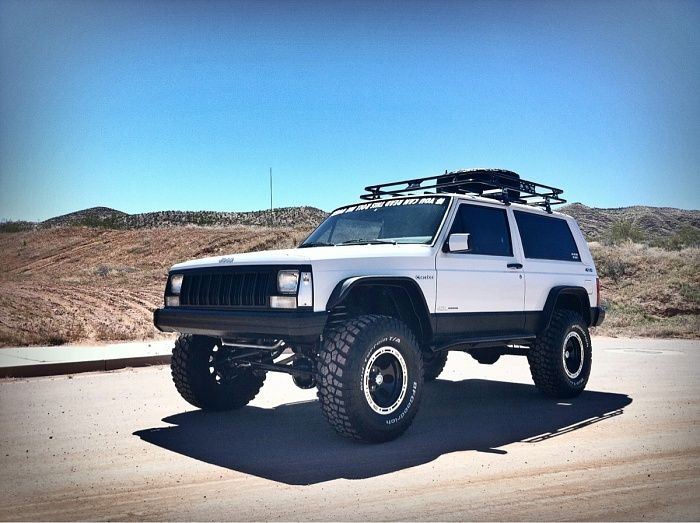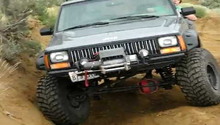Jeep Cherokee 1984-2001: Off-Roading Tips and Tricks
This article will help you get ready to hit the trails and point out some things to watch out for.
This article applies to the Jeep Cherokee (1984-2001).
Jeeps are legendary for their off-road ability, and there is a huge community of owners who make full use of those capabilities on a regular basis. While many Jeeps never see roads that aren't paved, it kind of defeats the purpose of owning one if you don't at least take it down a trail every now and then. But what if you've never been off-roading? There are a few things that you need to know, of course. We've rounded up all of the important ones and outlined them here to get you ready for some fun in the mud.
Be Prepared
First, it's important to understand the limitations of both your vehicle and your own driving ability. Modifications to your Jeep can seriously enhance its off-road capability, and you can get a good idea of both your limitations and what areas you might want to modify the first couple of trips out. Things like bigger tires and suspension lifts can help you navigate rockier terrain, and a winch can help you get unstuck in the likely event that you do get stuck.
It's very important to be prepared and research the trail you are thinking about driving in advance so that you can understand any difficulties you might face and any areas you might not be able to access. Never go off-roading alone, and preferably have a buddy with another vehicle accompany you. You will want to have a basic understanding of how to do simple repairs in the event of a breakdown, and make sure you have a way to communicate in the event that you don't have cell phone service.

At the very least, let someone know where you are going and what time you expect to be back, so that they can be ready to look for you if you encounter a problem. Pack some food, water, and basic emergency supplies just in case. And if you do break down and can't fix the problem, make sure you stay with the vehicle. It makes you much easier to find.
Some other things to take along with you include a map, GPS unit, basic tool kit, recovery strap, and potentially a high lift jack. These are very handy in the event that you get stuck on a rock or in mud or sand.
Start with Easy Terrain
Don't just jump into a crazy, rocky terrain right off the start. Begin with a light, easy trail and get to know your vehicle's limits. Be careful to look out for objects that might damage the underside of your vehicle, and most importantly, take things slow. As you gain confidence and learn how your vehicle reacts to different conditions, you can work your way up to more difficult terrain.

Transitioning to More Difficult Terrain
As you learn more about off-roading and get a good feel for it, slowly transition to more difficult terrain. You will eventually get to a point where you will need to invest in things like suspension lifts, bigger tires, beefier suspension components, winches, and hi-lift jacks. One of the best ways to learn and become a more proficient off-roader is to join a local club. There are tons of enthusiasts all over the country that get together frequently and enjoy the many trails around the nation. This is a great way to learn from experienced off-roaders who can help you avoid the mistakes and pitfalls they have already encountered.

Related Discussions
- Four-Wheeling Tips and Tricks - CherokeeForum.com
- What to Do When You Break Down on a Trail - CherokeeForum.com
- Newbie Off-Road Jeep Build - CherokeeForum.com






